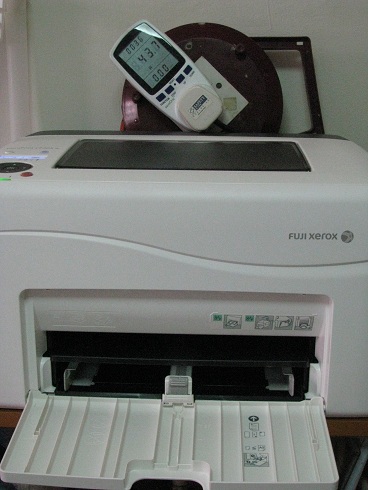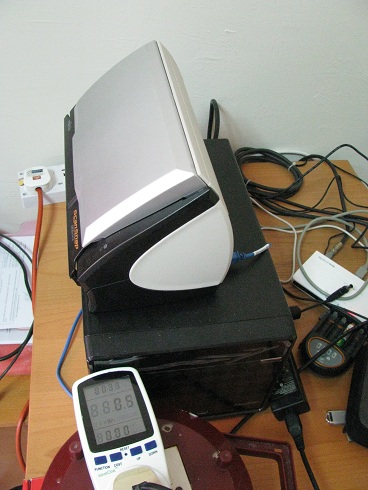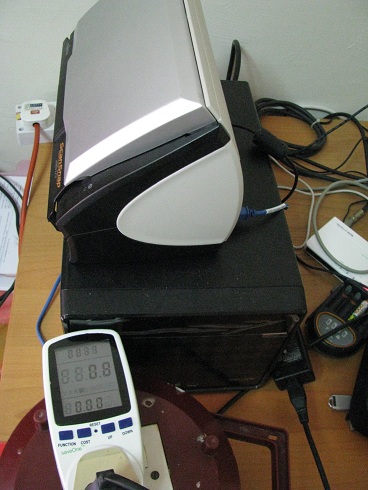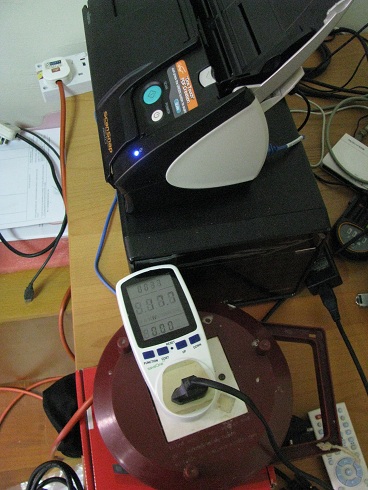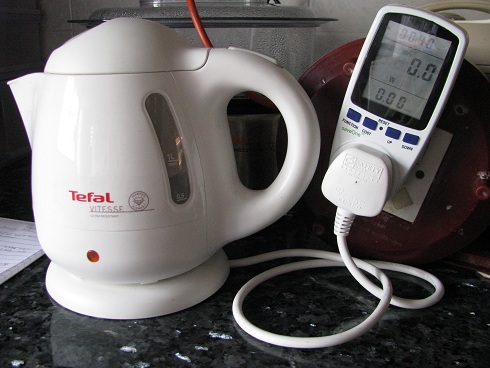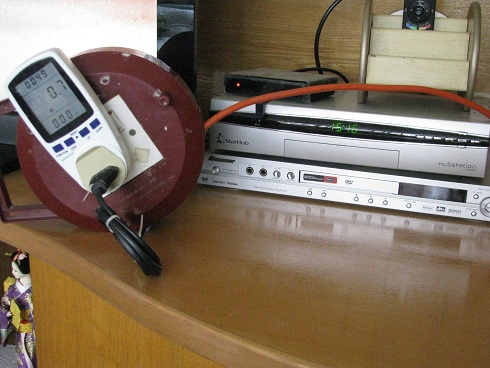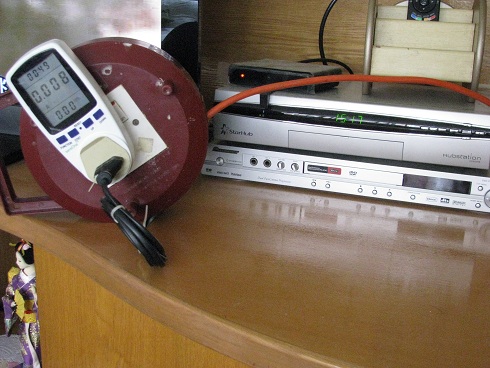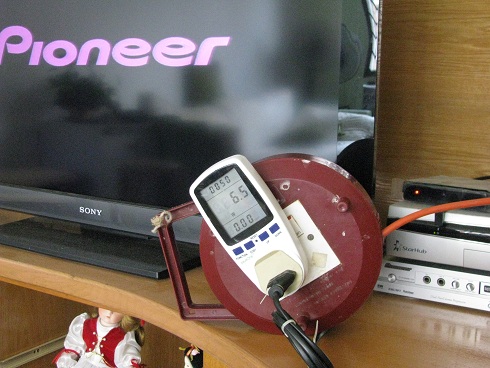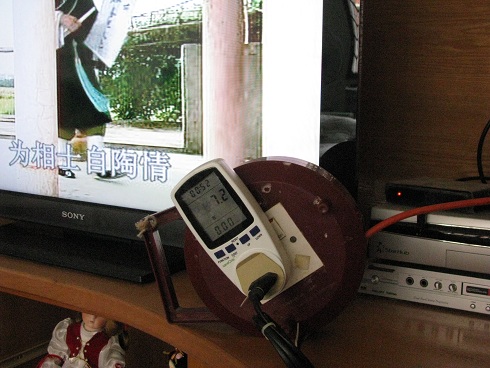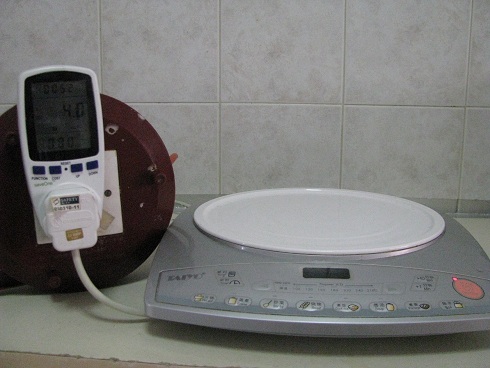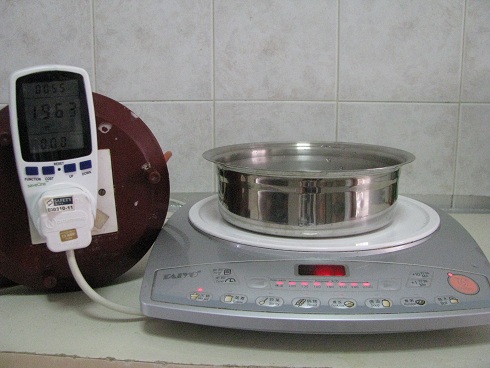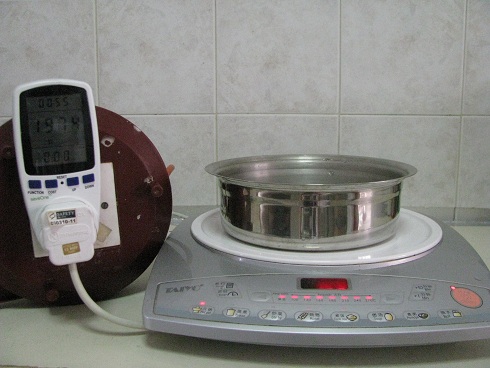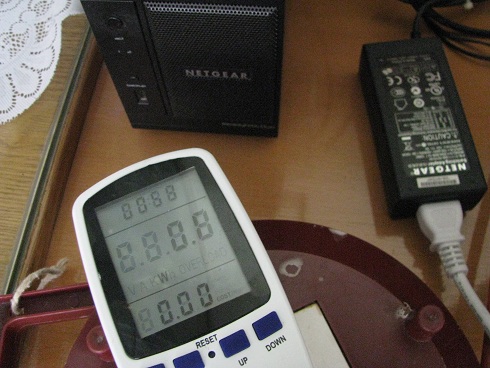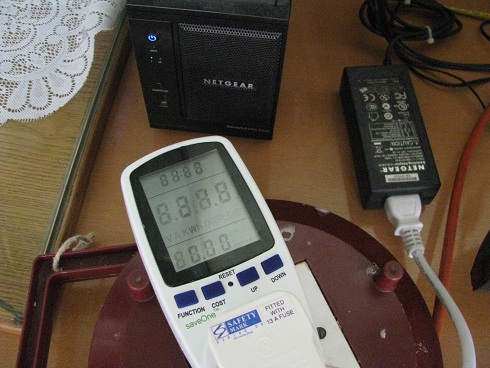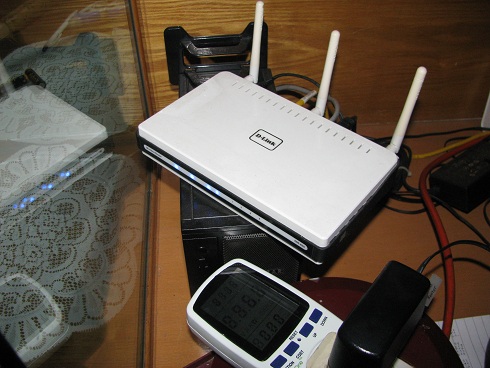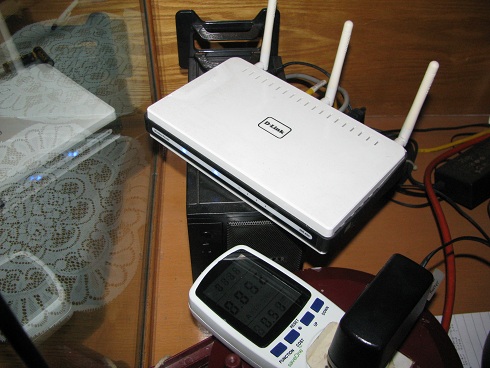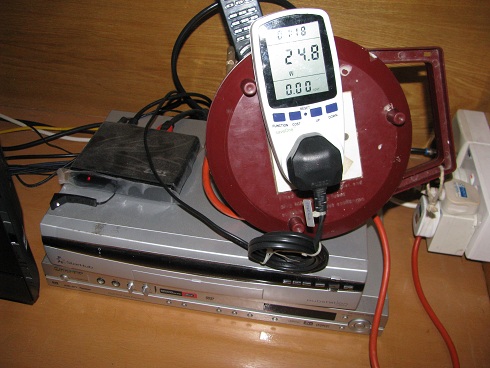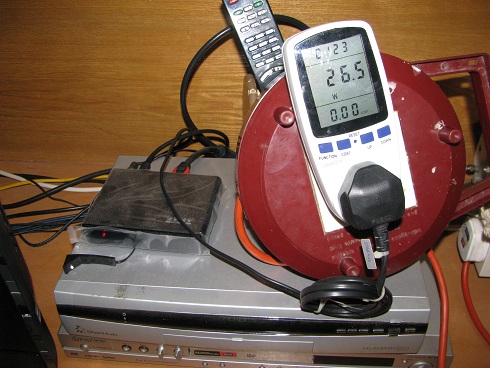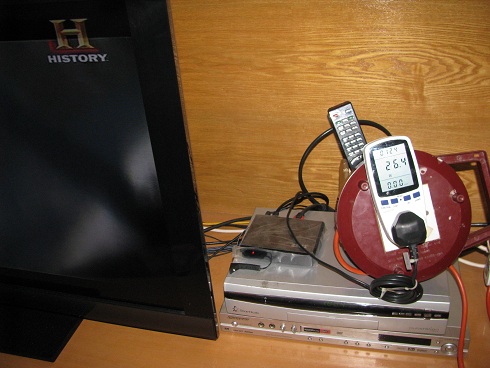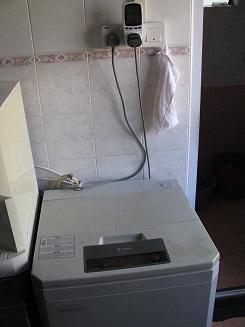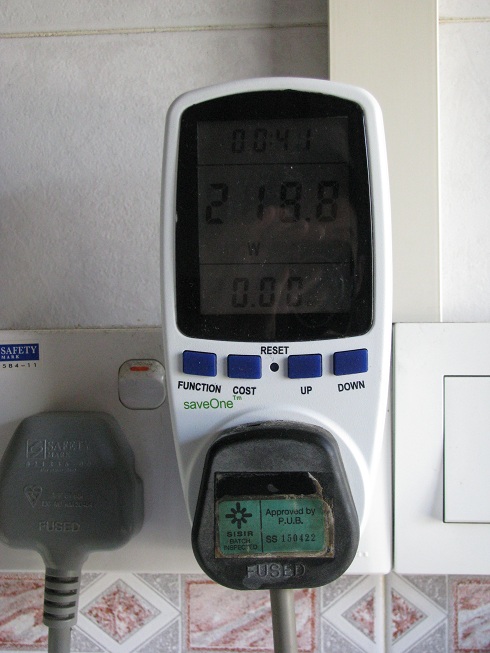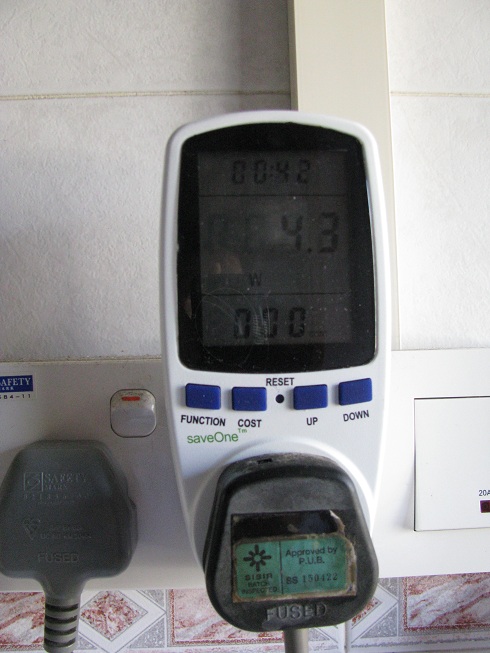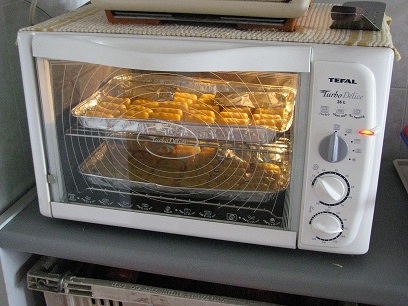How to save energy at home? Check out this page for my home appliance’s electricity consumption.
Let us begin energy/environment conservation for our planet by first understanding how and where we have wasted our energy.
- Edited by Lim Siong Boon, last dated 12-Dec-2011.
Topic Discussion Overview
- How much is the electricity tariff rate costing us?
- Power Meter
- Home Appliances Power Consumption
- Lightings
1. How much is the electricity tariff rate costing us? The Singapore electricity tariff rate has been rising steadily 18.03¢ (as of Apr 2009) to 27.28¢ (as of Jul 2011) ; A wopping 151% increase in tariff rate. How does this tariff rate relates to the electrical appliances that we are using at home? The following example show you how to compute the cost of our electricity cost.
Assuming a device consuming 10W 24hr per day for one whole month. Total energy consumption in a single day = 10W x 24hr = 240 Whr Total energy consumption in a month = 240Whr x 31days = 7440 Whr = 7.44kWh The bill for 7.44kWh of electricity consumption will be = 7.44kWh x $0.2728/kWh = $2.029632
This means that the appliance consuming 10W will cost me $2/mth. Appliance consuming 20W will cost me $4/mth. Appliance consuming 100W will cost me $20/mth. If the tariff rate go up, the cost of electricity per watt will relatively increase as well.
What can I do to reduce my electricity bills, at the same time conserve our global energy resource? First I have to understand my energy consumption in my own house, by doing a simple energy audit. Being energy conscious will be the very first step to start save energy. |
Our electricity tariff in Singapore since 2009. Energy cost: S$0.1803/kWh as on 1st Apr 2009 Energy cost: S$0.1928/kWh as on 1st Oct 2009 Energy cost: S$0.2169/kWh as on 1st Oct 2009 Energy cost: S$0.2287/kWh as on 1st Jan 2010 Energy cost: S$0.2356/kWh as on 1st Apr 2010 Energy cost: S$0.2413/kWh as on 1st Jul 2010 Energy cost: S$0.2334/kWh as on 1st Oct 2010 Energy cost: S$0.2410/kWh as on 1st Jan 2011 Energy cost: S$0.2558/kWh as on 1st Apr 2011 Energy cost: S$0.2728/kWh as on 1st July 2011 Energy cost: S$0.2698/kWh as on 1st Oct 2011 Energy cost: S$0.2759/kWh as on 1st Jan 2012
References: – http://www.spservices.com.sg/ – http://www.ema.gov.sg/Electricity/new/ (more tips to save energy) – Singapore electricity tariff rate Jun 2011 – Singapore electricity tariff rate Jan 2012
|
|
Calculator for computing Appliance’s Electricity Cost
|
|
The
beginning of this page starts with my handy portable power meter. It
will be the most important instrument to help me measure the power
consumption of the everyday appliances in my house. It was a
coincidence that I brought my power meter. I had always like to have
such a power meter to measure power consumption for fun and knowledge;
the cost of such a gadget was rather expensive to be purchase just for
fun. I got myself this power meter which is inexpensive. I like the
huge display; the numbers are easy to read. It is very simple to use;
just plug in the appliances that you want to measure and switched on
the power. The function button can be pressed to cycle through the list
of measurement parameters as follows. Besides measuring power consumption, this power meter is also very useful in my area of engineering works. This portable power meter helps to verify my electrical installation works. There are also times where 110Vac is used in our 230Vac electrical system in Singapore. This meter helps to check if the voltage step-down transformer installation is correct, before we plug in any expensive 110Vac equipment from oiverseas. It can also be used to check the wattage of your equipment so that the accessories with the correct wattage can be purchased and installed. Power factor (range 0.0 to 1.0) indicates the efficiency of the current drawn from the power station. Poor power factor is cause by your inductive equipment (eg. Fridge, Fan, Motor etc..) at home or factory. A power factor of 1.0 is the best, indicating the lowest possible current drawn. A reading of 0.6PF or below indicates a poor power factor, and you will expect the current drawn to be higher. The good news is, it can be improve by installing a capacitor across the power line. This meter measures the power factor which allows me to add in the correct amount of capacitance to correct the power factor close to 1.0. Power factor of 1.0 means that the current drawn by my equipment will be minimum. The meter will also show the drop in the current drawn, before and after the capacitance installation. For more technical information on correcting power factor, I have another delicated page explaining all the details. http://www.siongboon.com/projects/2012-01-24_power_saver/index.html In the course of designing products for the industries, this meter also helps me to verify my design in terms of the energy consumption. It helps me to improve the design, allowing the product to consume less energy. With this measuring instrument, we will have a better idea of how we can improve our energy consumption.
“If you can not measure it, you can not improve it.”
I hope this page can provide the awareness to get you conscious about
your carbon footprint. It will also serve as a platform to compare the
consumption with the available energy saving products. The journey
shall starts with my power meter. Let’s get started.
|
My portable power meter packed with many features (description details on the left). Measure power from the plug.
This power meter is purchased from Acknowledgement: some of the pictures on this page were taken from saveOne website. saveOne is a local company in Singapore, specialising in energy saving products and consultation services. They are also selling their various patented energy saving lightings products to promote green building to the industrial, hence reducing our carbon footprint in Singapore. Website: www.saveone.com.sg , Email: sales@saveone.com.sg Address: 63 Hillview Avenue, #08-01, Lam Soon Industrial Building, Singapore 669569.
Other brand of power meter available in Sim Lim Tower (Sim Lim Tower, 10 Jalan Besar 208787)
|
|
|
|
|
Power Consumption
|
Note: the indicated elecrical costing is using the triff rate of $0.30/kWh
|
|||||||
Home Lightings Energy saving LED and Fluorescent lamp
|
Check out the various energy saving lamps here. http://www.siongboon.com/projects/2011-04-17%20lamp%20bulb/index.html
|
|||||||
Hot/Warm Water Dispenser Model: Bio Pure (KEN2) |
Standby power: 3.5W Typical: 6.9W (wattage), 0.077A (current), 0.36PF (power factor) Highest Wattage detected: 2256W Low Wattage detected: 3.5W
|
|||||||
AC indicator lamp
|
Hardly any wattage and current detected from the AC indicator lamp found on the multi socket adaptor..
|
|||||||
Wireless Door Bell Model: Sonik |
|
|||||||
Electric Fan Model: Aerogaz 16″ stand fan AZ-163SF (60W) |
Standby power: 0W Speed 1 energy consumption: 34.2W, 0.159A, 0.95PF Speed 2 energy consumption: 40.6W, 0.177A, 1.00PF Speed 3 energy consumption: 45.3W, 0.190A, 1.00PF |
|||||||
Lab Bench Power Supply Model: Kikusui variable DC power supply PAD 35-10L 0~35V 10A |
14.3W consumption with no load to the lab bench power supply. Open DC voltage of about 0Vdc.
15.1W consumption with no load to the lab bench power supply. Open DC voltage of about 3Vdc.
Open DC voltage was tuned up to about 30Vdc. AC power consumption increases to 20.3W.
The current limits is purposely set very low to 0A. Consumption is now at 14.5W.
5Vdc open load. Wattage consumption is 15.2W.
5Vdc shorted load of 1A. This would have been a 5W load. Consumption is 27.9W. A 12.7W increased from the open load consumption.
|
|||||||
Din rail MCB (Miniature circuit breaker), ELCB/RCD (Earth leakage circuit breaker) Model: MOELLER PLS6-B6/2-AS (MCB ‘B’ 2Pole 6A 6kA), MOELLER PFIM-40/2/003-A (ELCB 40A 2Pole 30mA) |
The circuit breaker and ELCB or RCD device uses very little energy. No power consumption was detected.
|
|||||||
Charger for mobile phone (5V, 0.89A) Model: Nokia C3 |
Not much power consumption when the charger is not plugged onto the mobile phone. Measured consumption is 0W. When the charger is plugged in, the consumption is about 1.3W. |
|||||||
Charger for bluetooth earpiece (5V , 0.55A) Model: Sony Ericsson MW600 |
The bluetooth charger is similar to the mobile phone charger experiment. When the charger is plugged in, the consumption is about 0.7W. |
|||||||
Power Adaptor for laptop (19Vdc, 3.42A) Model: Asus X23F 10″ laptop |
For this Asus laptop’s adaptor, the consumption is more. When the adaptor is not plugged onto the laptop, the consumptionm measured is 0.3W, 0.014A.
When the adaptor is plugged onto the laptop, the consumption increases to 45.2W, 0.314A, 0.59PF
Then the laptop was switched on, the power consumption increases to 72.1W, 0.519A, 0.57PF.
|
|||||||
Hair Dryer Model: Rowenta (1500W) |
This hair consumes a standby power of about 0.1W, 0.015A.
The hair dryer was switched to no.1, and the consumption is measured to be 755W, 3.26A, 0.98PF
Switching to no.2, the consumption now is measured to be 1460W, 6.3A, 1.00PF
|
|||||||
Power Adaptor for Mini PC Model: Giada Slim-N10 Intel dual-core Atom N330 1.6GHz, NVIDIA 9400M Graphics processor, 5x USB, 250Gb HDD, 2Gb DDR2 RAM, 802.11b/g WiFi, HDMI, Card reader |
This Mini PC with power adaptor unplugged consumes about 0.5W. When it is plugged to the mini PC, the wattage increases to 3.6W, 0.053A, 0.25PF..
When the mini PC is switched on, the power consumption is about 28-30W, 0.21A, 0.55PF
|
|||||||
Food Streamer Model: Tefal, serie S07 (760W-900W) |
When the streamer is off, power consumption is measured to be 0W. Turning on the “Keep Warm” features consumes about 835W, 3.55A, 0.98PF. The streamer will switch the streamer off when it reaches certain temperature threshold. This will keep the food warm while trying to keep the power coonsumption low. With the streamer fully switched on, the reading is similar rto the power consumption of the “Keep Warm” feature.
|
|||||||
LCD monitor Model: 24″ Philips 240B MWB1240I (230Vac 1.2A) |
This monitor has a standby power of 0.6W. When it is switched on, it consumed about 27W and can reach as high as 43W.
Measurement taken 26.7W, 0.19A, 0.56PF.
|
|||||||
Personnal Desktop Computer Model: Shutter PC, Intel Core 2 Duo CPU E7500 2.93GHz, 4Gb RAM, 250Gb HDD, DVD drive |
The computer CPU system has a standby of 0.7W when it is plugged onto a socket but not switched on. Typical about 60W, and the highest reading meansured is >70W. Current is 0.361A, Power Factor of 0.82PF. When the computer is put into sleep mode, the power consumption drop down to 3.6W 0.067A 0.21PF..
|
|||||||
Color Laser Printer Model: Fuji Xerox CP205W |
The laser printer standby power is about 11.4W and reaches to 750W every 10 to 20sec in a pulsing manner (0.139A, 0.33PF). Perhaps it is using the energy to warm itself every now and then. Current 0.139A, Power Factor 0.33PF. Measurement taken during the printing process is about 50W to 750W.
|
|||||||
A4 paper scanner Model: Fujitsu Scansnap S510 (16V 1.5A), Power adaptor (230Vac to 16Vdc 2.5A) |
Scanner power adaptor consume 0.5W when it is not plugged onto the scanner. When it is plugged to the scanner, the standby power is about 0.8W.
The scanner reaches to about 17.7W (0.131A, 0.54PF) when it is turned on. During the scanning process, the consumption is about 26.4W.
|
|||||||
TV tuner box Model: MyGica (5Vdc 0.6A), Power adaptor (230Vac to 5Vdc 1A) |
This TV tuner box is surprisingly using not much energy. The consumption is measured at 0W when the adaptor is not plugged onto the device, and reads 1.5W when it is plugged in. Turning on the TV tuner consume only 3.3W. |
|||||||
Water Kettle Model: Tefal VITESSE BF21 (2000-2400W) |
The water is a simple heating element device. The load is resistive in nature. When not activated, the kettle consume 0W.
During the water heating process, the power consumption measured was 2140W (9.28A,0.98PF)
|
|||||||
Battery Charger AA/AAA Model: GP Power Bank GPPB50GS (230Vac 0.175mA, or 12Vdc 0.75A) |
The battery charges has a standby power of 0.7W (0.008A) when no battery is under charging. The charging is a pulsing process. The wattage taken pulse between 3.1W & 0.7W when one AAA size battery was inserted for charging. The wattage goes up as more batteries (1x AAA and 2x AA) were inserted. The pulse is between 6.9W & 0.7W (0.055A, 0.5PF)
|
|||||||
40″ LCD TV Model: Sony KDL-40EX400 (155W)
See in this short video clip how the wattage increase as the TV starts to turn on. MVI_8968, sony lcd tv power consumption.AVI
|
The standby power for this Sony TV is quite high. 10.1W (0.095A, 0.42PF) was measured. It is equivalent to a lamp turning on.
The TV was switched on with the TV show running. The power consumption at this point in time was about 114W (0.546A, 0.89PF) . There is this video footage capture for your reference. In the video, you can see on the power consumption rises as the TV was switched on. MVI_8968, sony lcd tv power consumption.AVI
|
|||||||
DVD player Model: Pioneer DV-595K (7W)
Standby power 0.7W measured is the same as specified in the user manual. Thie meter seems quite accurate for our energy audit. |
The standby power for this DVD player is 0.7W (0.008A).
When the player starts to playback video on the CD, the measurement taken was 6.5W (0.057A, 0.51PF). Energy consumption is quite reasonable for a player. It increases slightly at time to 7.2W (0.6A, 0.49PF)
|
|||||||
Induction cooker Model: TAIYO TH-ID19 (1900W)
See in this video clip how a induction cooker consume the energy. MVI_8983, induction cooker.AVI |
The standby power is about 4W (0.25A, 0.1PF) . When it is switched on without any pot, the reading was 10.8W (0.141A, 0.29PF). The induction cokker is quite intelligence. No power will be activated when the cooking pot is not on the stove. A stainless steel pot fillled with water was placed on the cooker stove. The induction cooker detects the load and starts to consume a lot of nergy to boil the water. The power consumption was 1974W (8.691A, 0.99PF). The induction cooker power factor is surprising good. The load may not be inductive in nature, or perhaps capacitors are added to the cooker to correct the power factor. By correcting the power factor of your appliances to a value close to 1.00, the current it draws will be at its minimum. This helps to reduce losses, reduce of cable size, prolong lifespan of your cable, generate less heat, etc…. many benefits. The benefits will not be significant but it is better to have it optimised than a design that isn’t. The following footage shows how the power consumption changes on this induction cooker. MVI_8983, induction cooker.AVI
|
|||||||
NAS Network Attached Storage Model: Netgear ReadyNAS Duo, Power adaptor (230Vac to 12Vdc 5A) |
The power adaptor was not plugged onto the NAS, gives a reading of 0.4W. This means that the power adaptor doing nothing is actually wasting the electricity when connected with the mains socket switched on. When plugged onto the NAS device, the standby power is 0.8W. When the NAS was switched on, the power reading was 23W (0.17A, 0.53PF).
|
|||||||
Home Wireless Router Model: Dlink DIR-655 (12Vdc, 2A) |
Wireless router’s power consumption seems ok. Measured power during operation was 6.1W (0.051A, 0.51PF).
|
|||||||
AV Wireless Transceiver Model: AV@AirPro |
This wireless AV transceiver consume about 2W. Quite little energy.
|
|||||||
Cable TV setup box Model: STARhub Hubstatio DC162SHB |
The STARhub setup box has a significantly high standby power required. The measured power during standby was 20-25.6W (0.184A, 0.59PF). The setup box reaches 27W (0.187A, 0.6PF) during start up, and consume 26.5W (0.19A, 0.59PF) during the cable TV show. The increase in power from standby is relatively low. This device has the most energy wasted during standby. Turning the machine off to a standby mode will only save you 1 to 2W, but actually wasting about 25W.
The little multimedia Zen10 box consume much less energy compared to the STARhub setup box. Zen10 consume only about 0.4W during standby, and 6.2W (0.052A, 0.42PF). If the power adaptor is not plugged onto Zen10, the wasted power on the adaptor is measured at 0.2W. |
|||||||
Fridge Model: MITSUBISHI |
The fridge consumption seems rather stable. Different from what I have expected. I thought it should be like a pulsing type of power consumption pattern. Switching on and off the compressor when neccesary to cool the fridge. Typical wattage consumption was about 209.1W and can reach as high as 388.7W. The meter was put on the fridge for another period of 32 days. The following reading was taken which was more accurate. Wattage at the point in time: 204W Current at the point in time: 1.126A Power factor at the point in time: 0.78 Lowest wattage detected: 17.3W Highest wattage detected: 440.5W Voltage range: 228.9 to 230Vac (50Hz) Total measurement period: 31days and 23 hours Total energy consumed: 149.1kWh Total electrical bill amount: $44.73 (base on electricity tariff rate $0.30/kWh)
I was shopping around to take a look at the latest energy efficient fridge. The consumption for these fridge as displayed was about 500-700kWh per annual. The efficient is much better. I am assuming the measurement was took without considering the typical scenario of opening of the fridge door. Opening the door increases the temperature inside, which means that more energy is required to cool it down.
|
|||||||
Washing Machine Model: National NA-FSSY6T |
Washing machine standby power is 1.3W – 1.8W (0.006A, 0.42PF) Filling up the washer with water consume 8W (0.038A, 1.00PF) Washing process rotate the motor clockwise and anti-clockwise. The consumption is pulsing between 100W and 340W (0.7A and 1.4A 0.19PF). The power factor becomes lower when the motor starts to be activate. Motor is an inductive load causing the power factor to becomes lower. After the washing process, the washing machine drained the water. This activity consume only 4.8W (0.021A 0.85PF). The washing machine starts to spin to squeeze out the water. The machine controls the spin. I can see the wattage moving slowing from about 230W to 260W as the spin starts to pick up. When the spin reaches its momentum, the wattage starts to drop gradually to 200W. At top spin the wattage is about 200W. The initial start up requires more torque to spin the load, therefore more power was required. When the spin reaches it top speed, the torque required was less, therefore less power was required. This activity consume an average of about 230W for 2 min.
The whole washing process takes about 45min to 60min. Total wattage consume is about 0.352kWh for two wash (medium load). This comes up to about 0.176kWh of energy consume for each washing. |
|||||||
Oven Model: TEFAL Turbo Delice 26L |
My mother was baking the pineapple tarts for Chinese New Year, when I took this measurement. I wanted to find out how much electricity is used to bake the tarts. The tarts were baked at about 180°C for about 20 minutes. A total of 7 trays (36 pineapple tarts per tray) were baked in 4 batch. The cost of electricity is $0.42. This means that the electricity cost for each batch of baking cost about $0.105, each tray cost $0.0525, or each pineapple tart cost about $0.0015. The bill seems quite affordable. Wattage at the point in time: 2900W Current at the point in time: 12A Power factor at the point in time: — Lowest wattage detected: — Highest wattage detected: — Total measurement period: 1 hour 20 minutes Total energy consumed: 1.431kWh Total electrical bill amount: $0.42 (base on electricity tariff rate $0.30/kWh)
|
|||||||
Soldering Iron Model: GOOT TQ-95 Quick Heat Soldering Iron 200W/20W
|
When the soldering iron is first switched on, the wattage measured is 60W. As the iron gets heated up, the temperature starts to drop to a constant wattage of 25W (0.1A, 1.0PF) There is this quick heat button to heat up the iron faster (can only press for no longer than 10sec). When this button is pressed, the wattage shoot up to about 128W (0.523A, 0.98PF). The soldering iron is a resistive load, which is why the power factor is always quite close to 1.0PF.
Cost of running the soldering iron for 1 hour = 25W/1000 x 1hour x 0.30kWhr = $0.0075 (about 1 cent every hour)
|
|||||||
Conclussion: – Top energy consuming devices – Many switching AC-DC power adaptor do consume energy when it is left switched on. The power factor from all these advance switching adaptor seems quite poor. |
Keyword:
Power meter, energy consumption measurement, energy audit, energy saving, save energy, ECO friendly


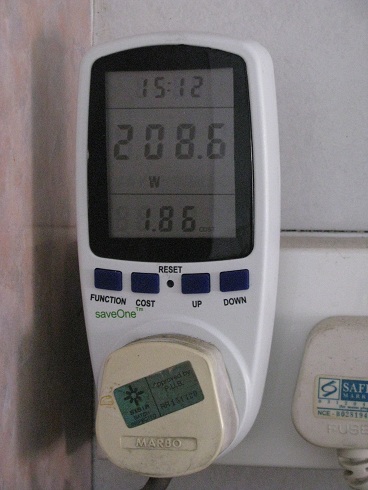
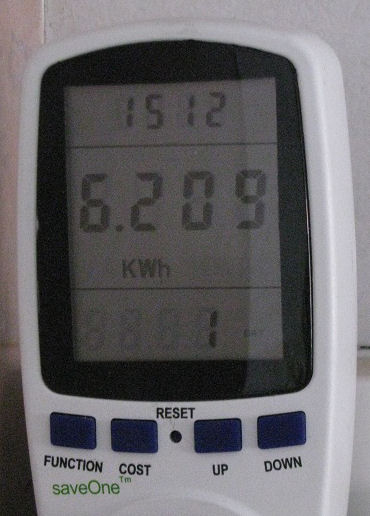





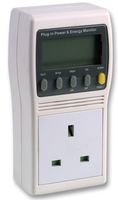
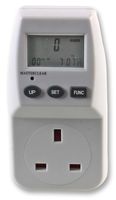
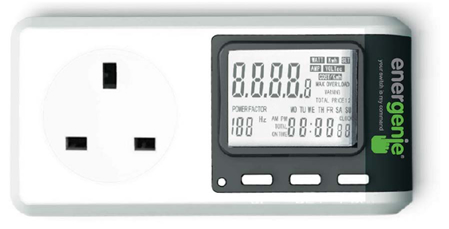

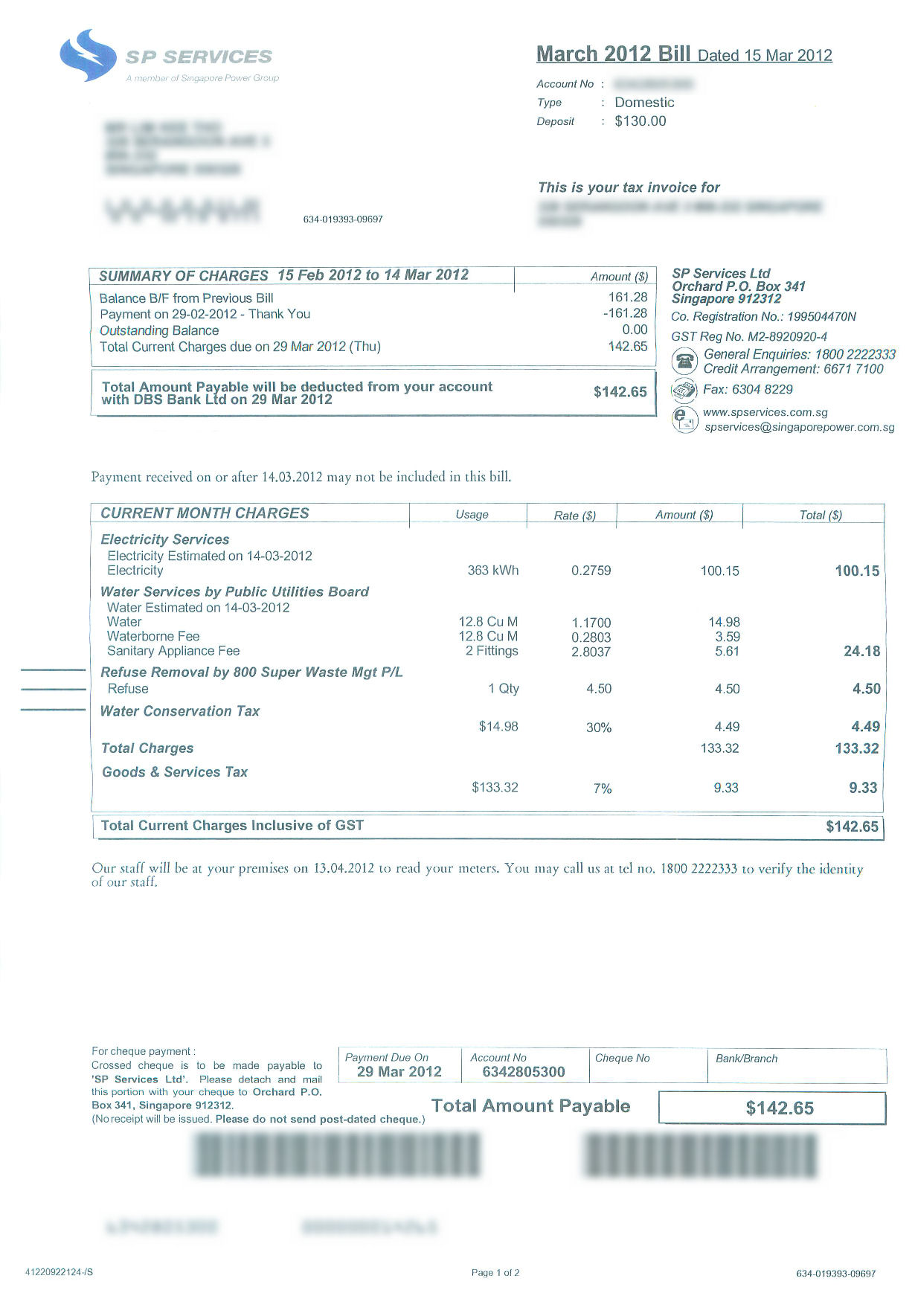



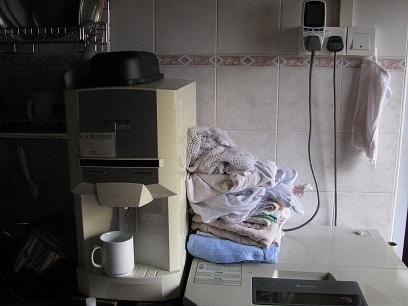


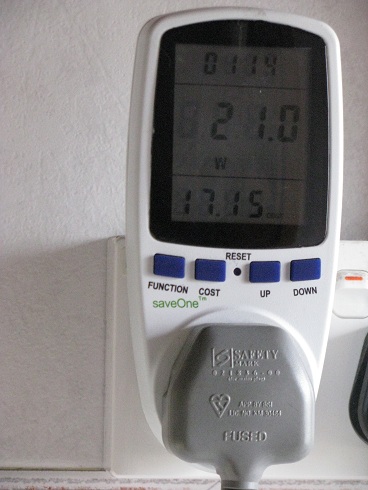
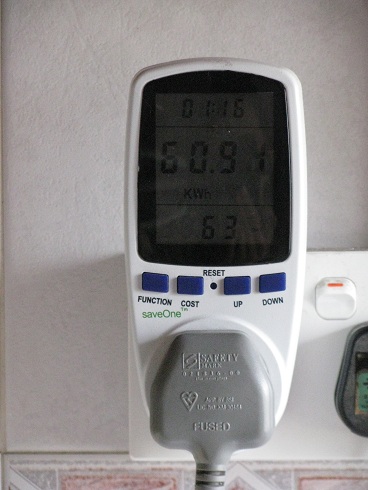
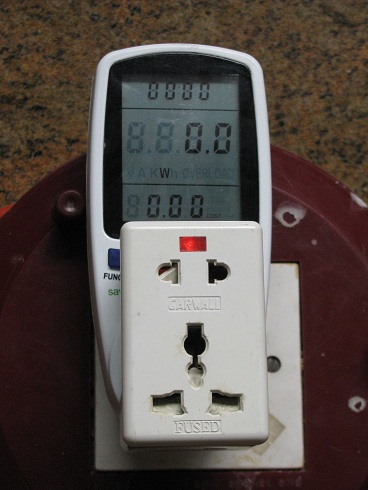

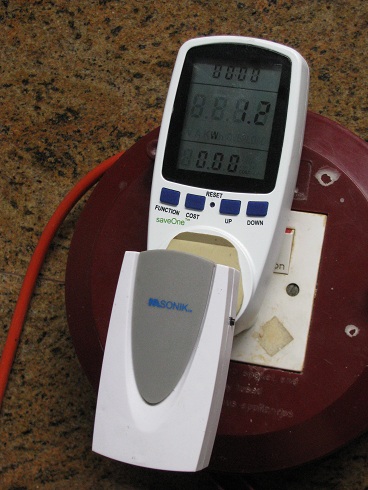 Standby power is 1.2W
Standby power is 1.2W  Even if the loud door bell ring is activated, the consumption still remains at 1.2W.
Even if the loud door bell ring is activated, the consumption still remains at 1.2W.  The door bell transmitter outside the door is using a battery.
The door bell transmitter outside the door is using a battery. 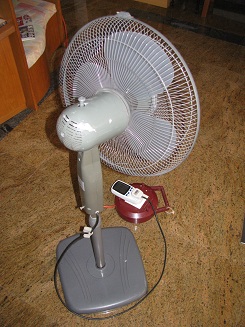

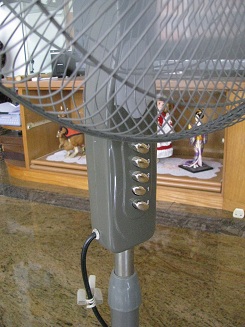
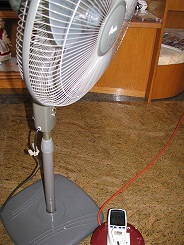

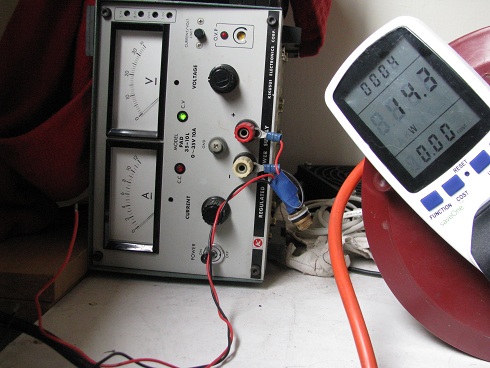
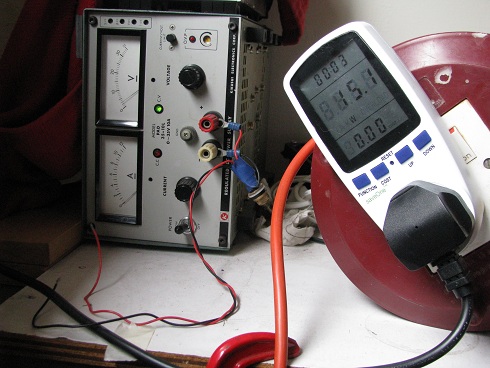
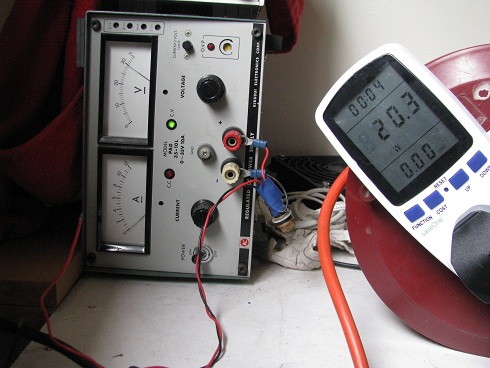
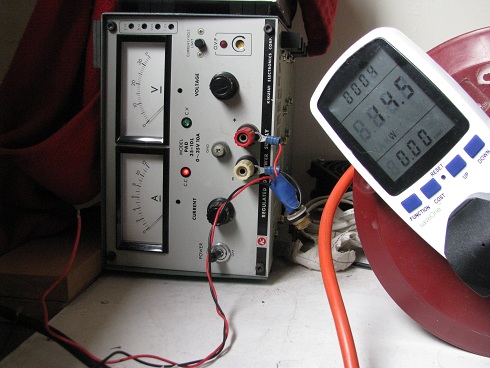
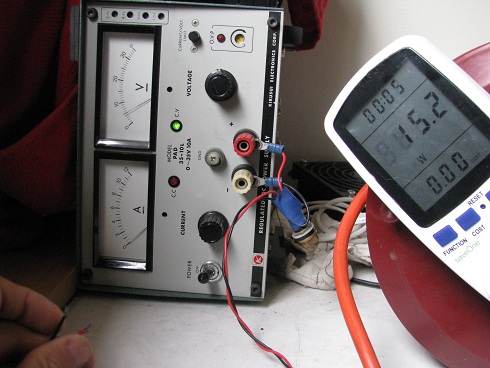

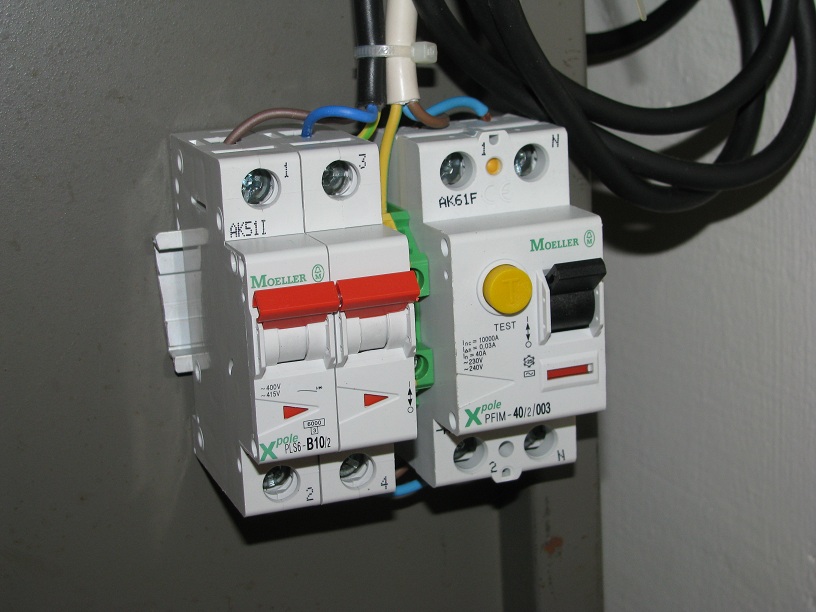
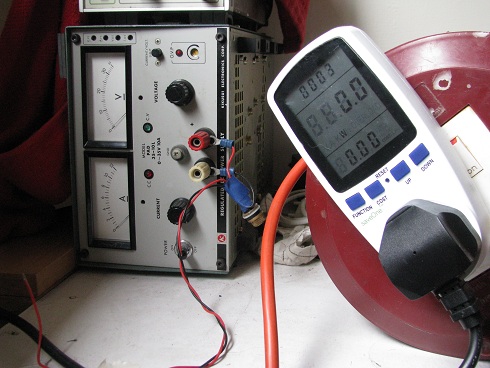
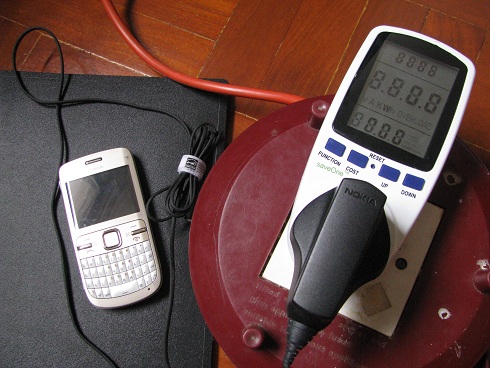
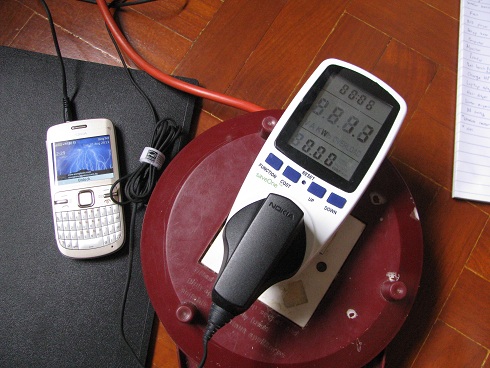

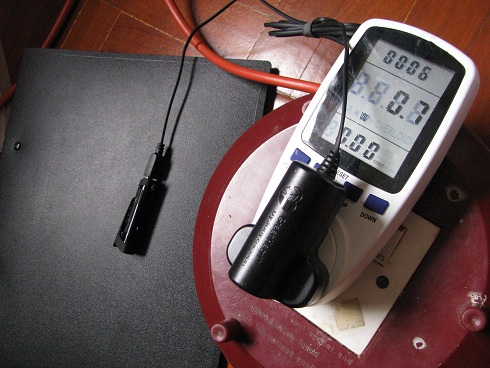


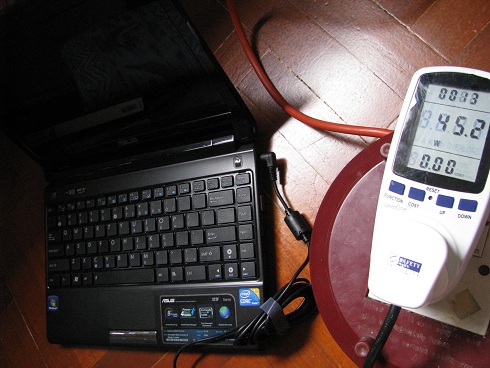

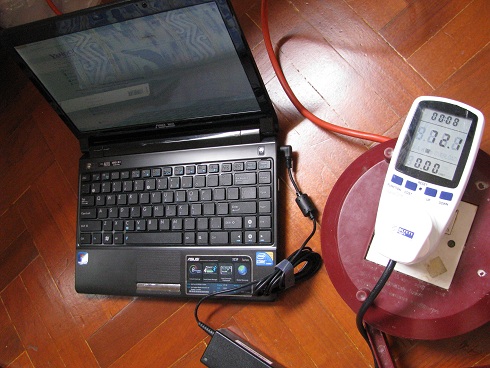

 The laptop was shutdown, and the power consumption drop back to 0.328A, 0.69PF. Should be about 45W.
The laptop was shutdown, and the power consumption drop back to 0.328A, 0.69PF. Should be about 45W.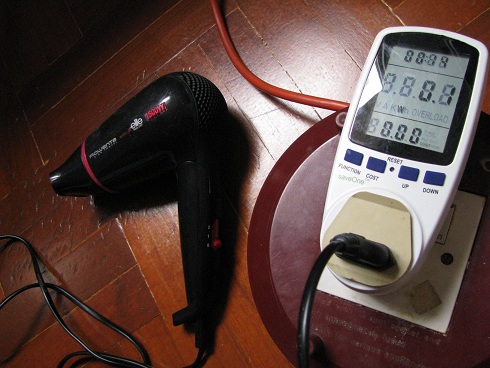
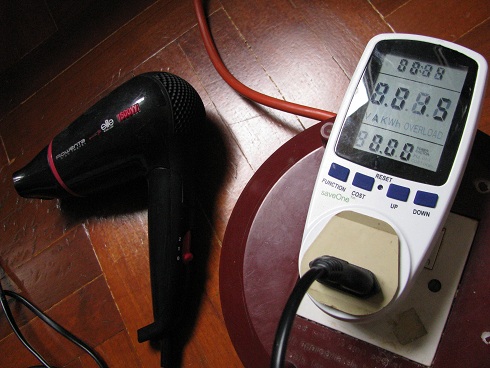
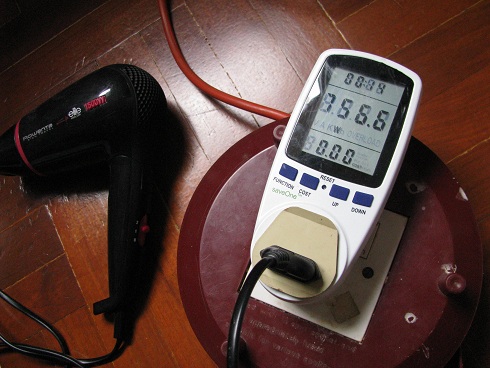



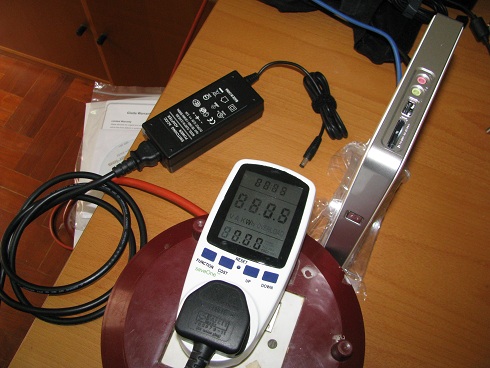



 Power consumption during standby with mini PC switched off.
Power consumption during standby with mini PC switched off. 



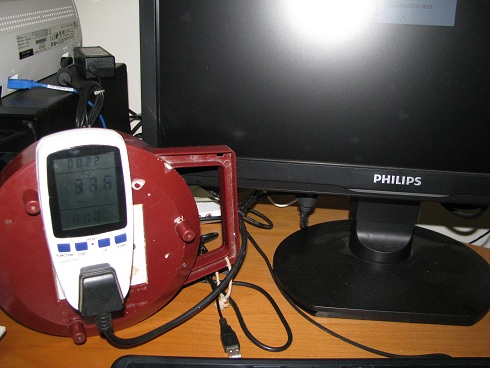

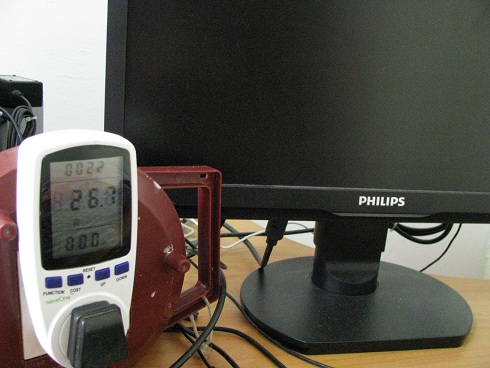
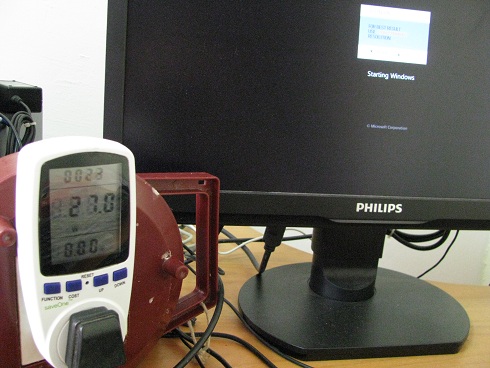


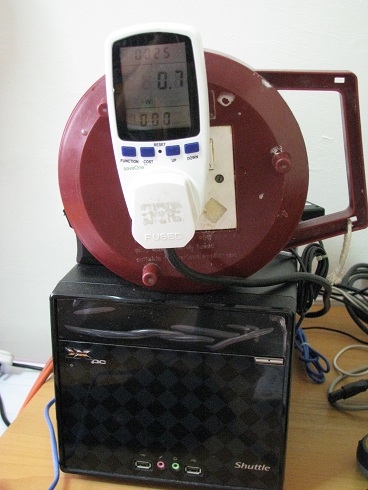
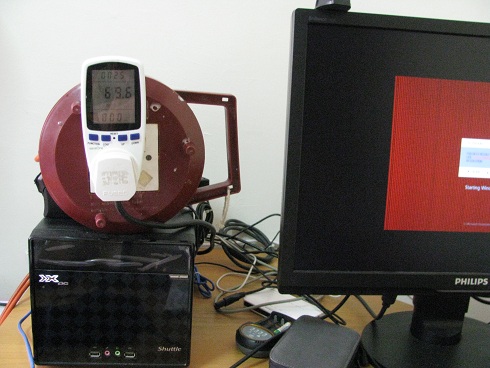




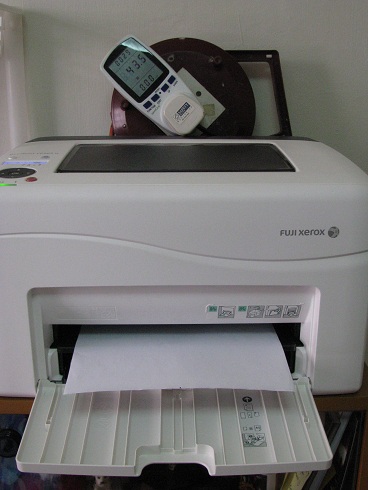
 Printer on standby 11.5W to 750W
Printer on standby 11.5W to 750W 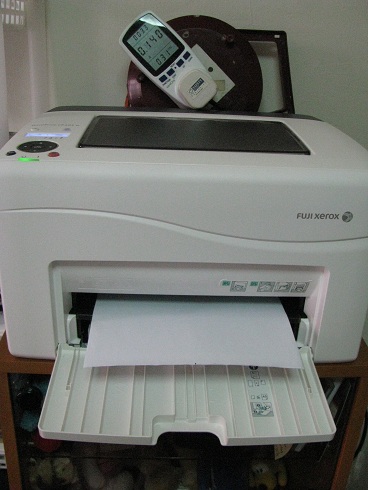
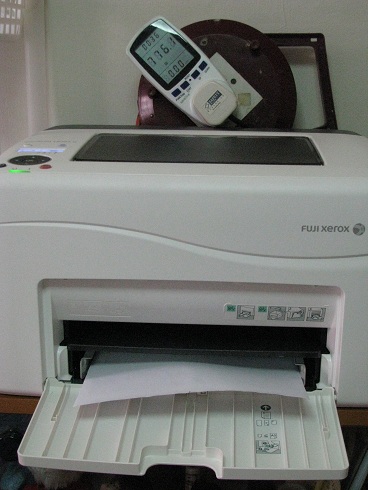 Printer reaching its peak 776.1W.
Printer reaching its peak 776.1W. 